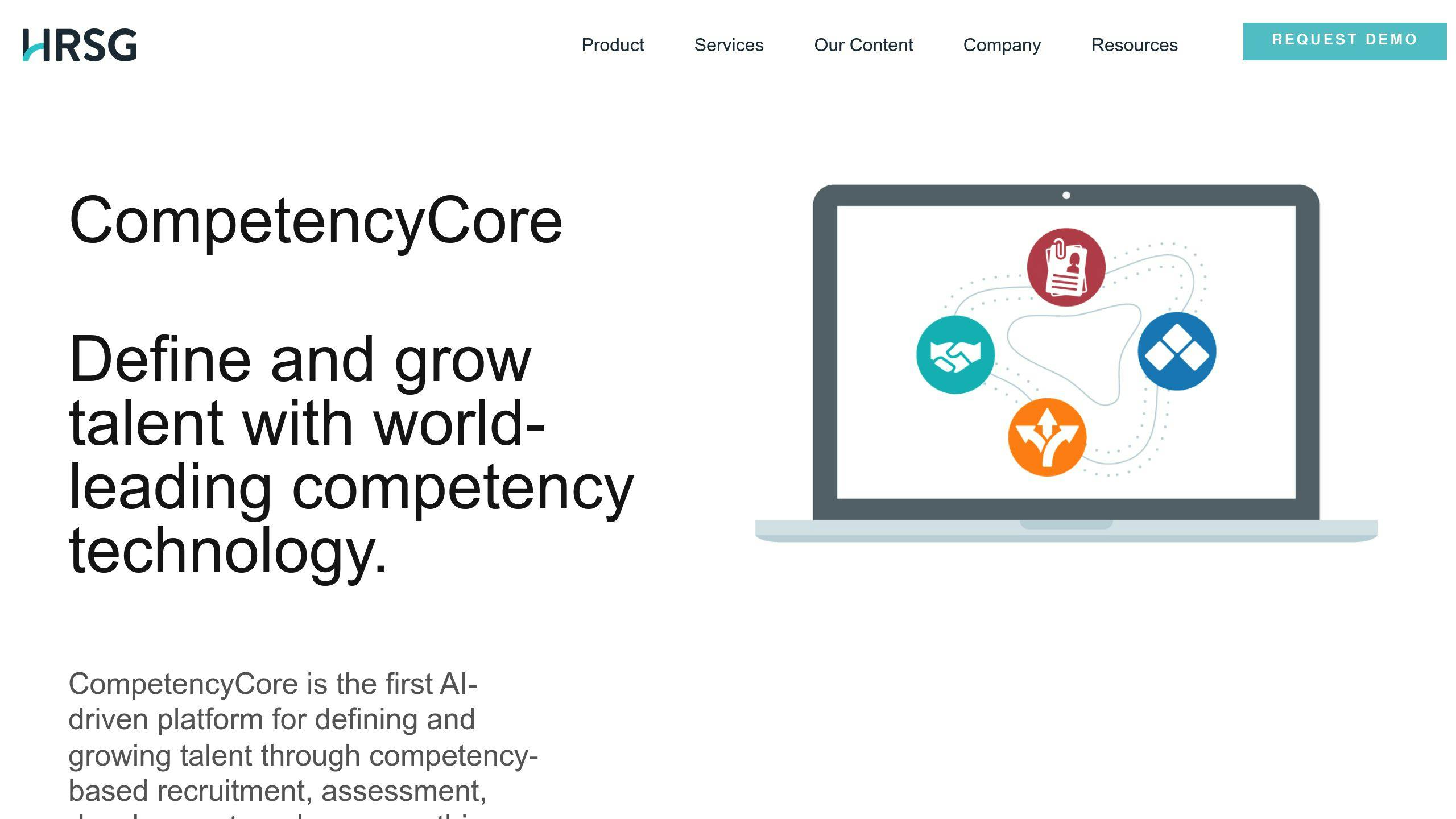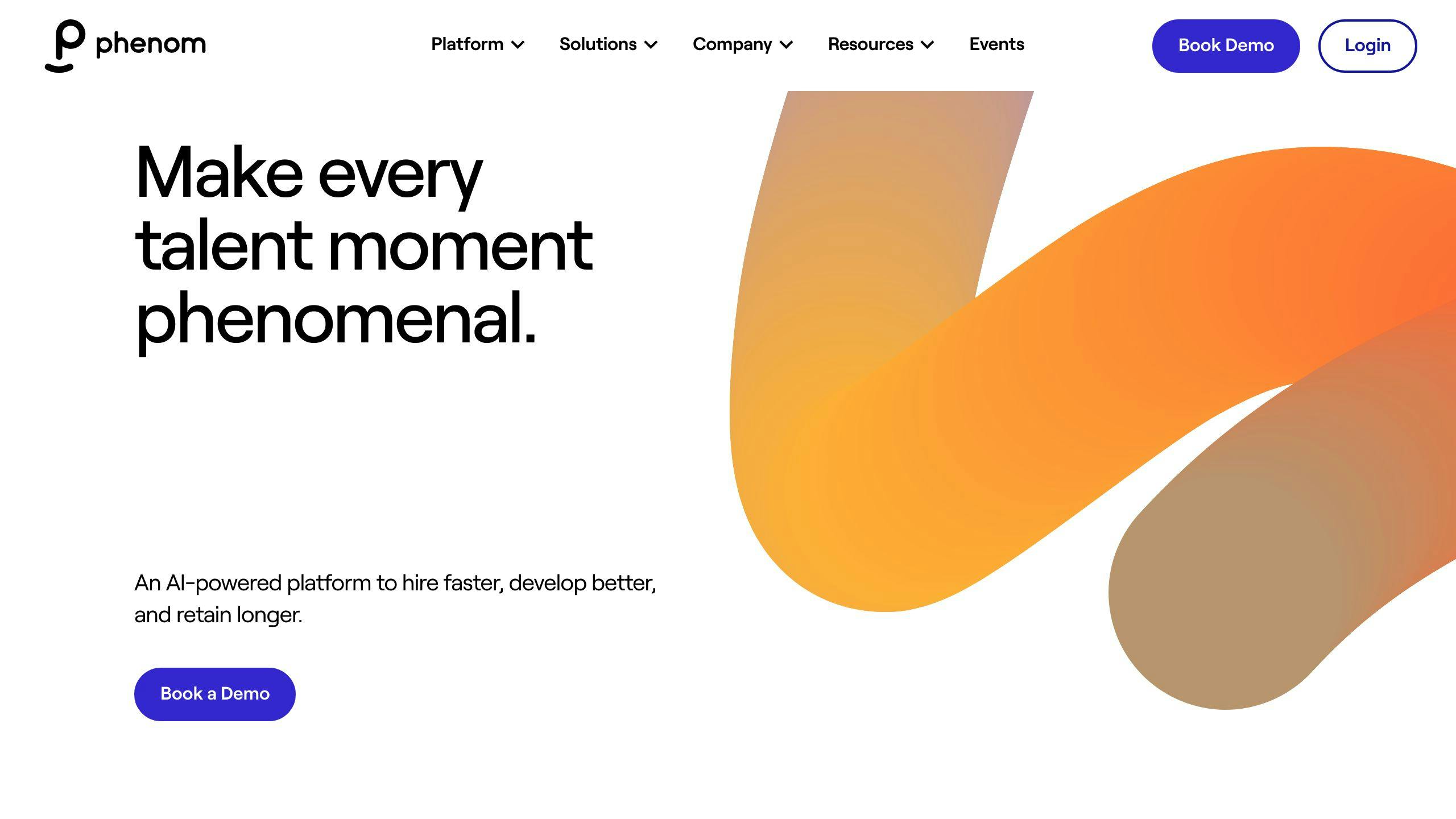HR technology plays a crucial role in facilitating employee career growth and development. By leveraging AI-driven career pathing solutions, organizations can:
- Identify skill gaps
- Suggest personalized learning paths
- Foster a culture of continuous learning
Common barriers to career advancement include:
| Barrier | Description |
|---|---|
| Lack of Transparency | Unclear career paths or growth opportunities |
| Skills Gaps | Difficulty keeping up with rapid technological change |
| Insufficient Development Plans | Lack of personalized development guidance |
| Limited Feedback and Mentorship | Infrequent feedback or mentorship opportunities |
| Bias and Stereotyping | Unconscious biases limiting opportunities for some groups |
HR tech solutions like CompetencyCore, Phenom's AI Career Pathing Tools, and ADP's Career GPS offer features to:
- Map competencies and career paths
- Identify strengths, weaknesses, and skill gaps
- Provide personalized career recommendations and learning resources
By designing successful career pathing programs with a clear framework, manager-employee collaboration, and a culture of continuous learning, organizations can improve career mobility, employee satisfaction, and retention.
Barriers to Career Advancement
Despite the importance of career growth, employees often face significant obstacles that hinder their progress. These barriers can lead to high turnover rates, job dissatisfaction, and a lack of engagement.
Common Barriers to Career Advancement
The following are common barriers to career advancement:
| Barrier | Description |
|---|---|
| Lack of Transparency | Unclear career paths or opportunities for growth, leading to frustration and disillusionment. |
| Skills Gaps | Rapid technological change and shifting industry trends create skills gaps, making it difficult for employees to remain relevant. |
| Insufficient Development Plans | No personalized development plans, leaving employees without guidance or direction. |
| Limited Feedback and Mentorship | Infrequent feedback or mentorship, making it difficult for employees to identify areas for improvement. |
| Bias and Stereotyping | Unconscious bias and stereotyping limit opportunities for certain individuals, particularly from underrepresented groups. |
By understanding these common barriers, organizations can take steps to address them and create a more supportive and inclusive environment for employee growth and development.
HR Tech's Role in Career Growth
HR technology plays a crucial role in supporting employee career growth by providing a range of tools and features that facilitate personalized development. By leveraging HR tech, organizations can create a more structured and transparent approach to career advancement, helping employees identify and pursue opportunities that align with their skills, interests, and goals.
Clear Career Paths
HR tech enables organizations to provide employees with a clear and visible career path. This can be achieved through the use of career mapping tools, which help employees visualize their career progression and identify the skills and experience required to reach their desired roles.
Mentorship and Guidance
HR tech also facilitates mentorship initiatives, providing employees with access to guidance and support from experienced professionals within the organization.
Personalized Learning and Development
HR tech enables organizations to offer employees tailored learning and development opportunities, addressing skills gaps and ensuring they have the skills and knowledge required to succeed in their roles.
Promoting Continuous Learning
HR tech helps promote a culture of continuous learning and development, encouraging employees to take ownership of their career growth and seek out opportunities for growth and advancement.
Business Benefits
The effective use of HR tech can help organizations attract, retain, and develop top talent, driving business success and competitiveness.
Overcoming Career Pathing Challenges
Implementing career pathing programs can be complex and challenging for organizations. Several barriers can hinder the successful implementation of these programs. However, HR technology can play a crucial role in addressing these challenges and ensuring the effective implementation of career pathing initiatives.
Common Challenges
The following are common challenges organizations face when implementing career pathing programs:
| Challenge | Description |
|---|---|
| Resistance to Technological Adoption | Employees may be hesitant to adapt to new systems and processes. |
| Budget Limitations | Implementing a career pathing program can require significant investment in HR technology, training, and resources. |
| Insufficient Managerial Support | Managers may not have the necessary skills or resources to effectively support employees in their career development. |
Addressing the Challenges
To overcome these challenges, organizations can take the following steps:
- Provide Comprehensive Training and Support: Ensure that employees are comfortable using the technology by providing comprehensive training and support.
- Start Small: Pilot the program with a select group of employees before scaling up to demonstrate the value of the program and secure further investment.
- Provide Training and Coaching for Managers: Ensure that managers have the necessary skills and knowledge to support their team members by providing training and coaching.
By addressing these challenges, organizations can ensure the successful implementation of career pathing programs and provide employees with the support and resources they need to achieve their career goals. HR technology can play a critical role in this process, providing a range of tools and features that facilitate personalized development, mentorship, and guidance.
HR Tech Solutions for Career Development
HR technology offers various solutions to support employee career growth and development. In this section, we'll explore different HR tech options, including career pathing software and learning platforms, highlighting their features and benefits.
CompetencyCore: Personalized Career Mapping

CompetencyCore is a competency-based job description software that helps define and grow talent through AI-driven technology. The platform enables employees to define their career trajectories through competency models and progress tracking.
| Feature | Description |
|---|---|
| Creating better job descriptions | AI suggestions for improved job descriptions |
| Mapping and implementing competencies | Easy implementation of competencies |
| Clear career paths | Employees understand their career paths and development needs |
Phenom's AI Career Pathing Tools

Phenom's AI-powered career pathing solutions offer a dynamic skills framework that accelerates career development. The platform provides employees with personalized career paths, identifying skills gaps and recommending learning resources to bridge those gaps.
| Feature | Description |
|---|---|
| Identifying strengths and weaknesses | Employees understand their strengths and weaknesses |
| Exploring career opportunities | Employees can explore career opportunities and pathways |
| Developing new skills | Employees can develop new skills and competencies |
ADP's Career GPS: Exploring Pathways

ADP's Career GPS is a career development platform that aids employees in uncovering career pathways and unlocking their potential. The platform provides assessment tools that help employees identify their strengths, interests, and skills, and matches them with relevant career opportunities.
| Feature | Description |
|---|---|
| Career assessments and profiling | Employees identify their strengths, interests, and skills |
| Personalized career recommendations | Employees receive personalized career recommendations |
| Access to learning resources | Employees have access to learning resources and development opportunities |
These HR tech solutions provide employees with the tools and resources they need to take ownership of their career growth and development. By leveraging AI-powered career pathing tools, competency-based job descriptions, and personalized learning platforms, organizations can support their employees' career aspirations and improve overall job satisfaction.
sbb-itb-d78b90b
Designing Successful Career Pathing Programs
Creating effective career development initiatives requires a thoughtful and structured approach. Here are some practical tips to help you design successful career pathing programs:
Building a Clear Career Framework
A clear career framework is essential for successful career pathing. This involves defining roles, skills, and progression pathways within your organization. By doing so, you provide employees with a roadmap to guide their professional development.
| Element | Description |
|---|---|
| Clearly defined job roles and responsibilities | Define each role's tasks and expectations |
| Associated skillsets and competencies for each role | Identify the skills and competencies required for each role |
| Pathways for vertical and lateral career movements | Show how employees can move up or across the organization |
| Criteria for promotions and advancements | Establish clear criteria for career advancement |
Regularly update the framework to ensure it remains relevant in the face of evolving business needs and industry trends.
Encouraging Manager-Employee Collaboration
Regular feedback sessions and check-ins between employees and managers are critical to successful career pathing. These interactions provide employees with insights into their progress, areas for improvement, and potential career opportunities within the organization.
| Aspect | Description |
|---|---|
| Goal alignment and progress assessment | Discuss employee goals and progress |
| Identification of skill gaps and development opportunities | Identify areas for improvement and development |
| Recognition of achievements and contributions | Acknowledge employee achievements |
| Constructive discussions about career aspirations | Discuss employee career goals and aspirations |
By empowering managers to sculpt impactful career journeys for their teams, you can create a culture of continuous learning and growth.
Fostering a Culture of Continuous Learning
A culture of continuous learning is essential for successful career pathing. This involves providing employees with opportunities to develop new skills, acquire knowledge, and stay up-to-date with industry trends.
| Strategy | Description |
|---|---|
| Providing training programs, workshops, and online courses | Offer opportunities for skill development |
| Encouraging mentorship and coaching | Pair employees with experienced mentors |
| Offering opportunities for job rotations and shadowing | Provide hands-on experience in different roles |
| Recognizing and rewarding continuous learning and development | Acknowledge and reward employee development |
By designing successful career pathing programs, you can create a culture of continuous learning, improve employee engagement, and drive business success.
Measuring Career Pathing Success
To evaluate the effectiveness of career pathing initiatives, it's crucial to track key performance indicators (KPIs) that measure career progression, employee satisfaction, and attrition rates.
Career Mobility
| Metric | Description |
|---|---|
| Career Mobility Rate | Percentage of employees moving up or laterally within the organization |
| Promotion Rate | Percentage of employees receiving promotions |
| Skill Acquisition Rate | Percentage of employees acquiring new skills and competencies |
Return on Investment (ROI)
| Metric | Description |
|---|---|
| ROI of Career Development Programs | Financial benefits of career development programs, such as reduced turnover rates and improved productivity |
| Cost Savings | Cost savings resulting from reduced turnover rates and improved employee retention |
Employee Satisfaction and Engagement
| Metric | Description |
|---|---|
| Employee Satisfaction Rate | Percentage of employees satisfied with career development opportunities |
| Employee Engagement Rate | Percentage of employees engaged and motivated in their roles |
| Net Promoter Score (NPS) | Measure of employee loyalty and satisfaction |
Attrition Rates
| Metric | Description |
|---|---|
| Attrition Rate | Percentage of employees leaving the organization |
| Turnover Rate | Percentage of employees leaving the organization due to lack of career development opportunities |
By tracking these KPIs, you can measure the success of your career pathing initiatives and make data-driven decisions to refine your strategies and drive business success.
Conclusion: HR Tech for Career Growth
HR technology plays a vital role in driving employee career growth and development. By leveraging HR tech solutions, organizations can create personalized career paths, identify skill gaps, and provide targeted training programs to enhance employee skills and knowledge.
Benefits of HR Tech in Career Growth
HR tech offers numerous benefits for both employees and organizations. It enables employees to:
- Take ownership of their careers
- Gain a clear understanding of their strengths and weaknesses
- Access opportunities for growth and development
For organizations, HR tech helps to:
- Identify future leaders
- Reduce turnover rates
- Improve overall business performance
Integrating HR Tech into Strategic Planning
As we move forward, it's essential for HR professionals to integrate HR tech into their strategic planning. This involves creating a culture of continuous learning and development, which can help organizations stay ahead of the curve and drive business success.
Empowering Employees
By harnessing the power of HR tech, organizations can create a workforce that is skilled, engaged, and motivated to drive business success. This, in turn, empowers employees to reach their full potential and achieve their career goals.
In conclusion, HR tech is a critical component of employee career growth and development. By leveraging its power, organizations can create a workforce that is equipped to drive business success.
FAQs
How does HR help with career development?
HR helps employees grow in their careers by providing opportunities for learning and development. They organize events, conferences, and guest speaker sessions to expose employees to new ideas and insights. By promoting a growth mindset, HR empowers employees to take ownership of their career growth.
How does a role in HR technology align with your career goals?
A role in HR technology can help you develop skills in talent management, succession planning, and career pathing. HR technology supports career development and succession planning, which are crucial for retaining top talent and ensuring organizational continuity. By using HR software, organizations can create comprehensive skills and competency profiles for each employee, helping them identify areas for improvement and develop a personalized career path.
Benefits of HR Technology in Career Development
| Benefits | Description |
|---|---|
| Develops skills | HR technology helps develop skills in talent management, succession planning, and career pathing. |
| Supports career growth | HR technology supports career development and succession planning, ensuring organizational continuity. |
| Identifies areas for improvement | HR software helps identify areas for improvement and develop a personalized career path. |


